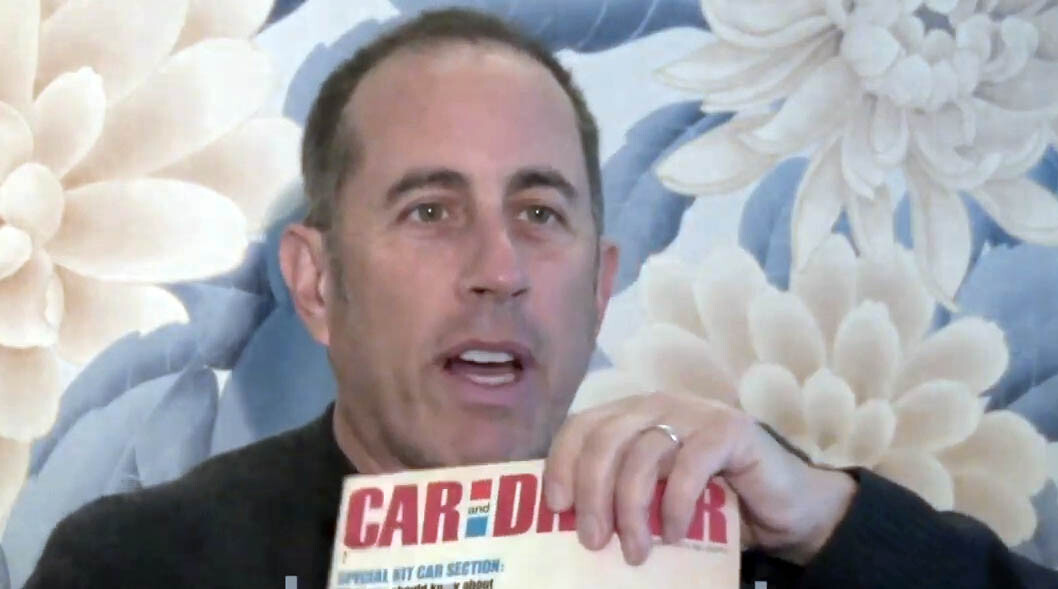Seinfeld Learned Comedy From A 'Christmas Story’s Jean Shepherd

Ralphie’s back.
The nearsighted kid who came thisclose to shooting his eye out with a Red Ryder Carbine Action 200-shot Range Model air rifle is now a haggard, nearsighted dad, trying to recreate the magic of Christmas in a new sequel set in the 1970s.
All of the fan-favorite story beats from the original appear to be firmly in place, including middle-aged Peter Billingsley as Ralphie. But it’s missing the most important element: The voice of Jean Shepherd, narrator of the original Christmas Story, author of the stories it’s based on and legendary hero of one Jerry Seinfeld. “Everything I do — back at my stand-up or TV series, it’s all about my dramatizing of the ordinary,” Seinfeld told Bill Carter during a Paley Center discussion back in 2013. On Seinfeld, a show famously about nothing, Jerry and Co. would “take the smallest possible thing and make it as big as we can. You can see that (Shepherd) had a similar gift.”
Don't Miss
Known as a humorist and radio personality more than an out-and-out comedian, Jean Shepherd had a small but loyal following that influenced a generation of funny people. In New York City, of all places, Shepherd spun folksy tales of growing up in Hammond, Indiana, painting vivid pictures of American life on an overnight radio shift.
But that’s not where Seinfeld discovered Shepherd. “It all started with these magazines I used to read as a kid about cars,” he says in the documentary Shep. Shepherd had a regular column in Car and Driver that fascinated young Jerry. Instead of running down a particular auto’s features and performance numbers, Shepherd would discuss the cars’ personalities. “I do a show now called Comedians in Cars Getting Coffee, and that show, as far as the way I talk about the cars, is me talking about the personalities of the cars,” Seinfeld told Carter. “And Jean Shepherd was the one who took me into that viewpoint on things — appreciating the personalities of tiny things in life.”

As for a direct influence on Seinfeld’s stand-up? He gives Shepherd all the credit for that, too. You can connect the dots by watching this clip from Jean Shepherd’s America, where he extols the virtues of beer:
“In this glass of beer, you look at this gold and rich, ice-cold bubbling depth,” Shepherd opines. “You see the echoes of lost battles. You hear the echoes of ancient victories: a million ball games, 10 million football games, and thousands of family moments. Fights, victories, lovemakings, the back seat of the Pontiac, the long trip on the way to the zoo, the beer can in the weeds. When you look at that glass of beer you’re looking at life itself. The mother of us all. Beer.”
What appealed to Seinfeld was how Shepherd took something mundane from everyday life — i.e., beer — and celebrated it rather than ridiculing it, the opposite of most comedians’ approach. “What (comics) do is talk about what’s wrong with it and why it’s stupid,” Seinfeld told Carter. “And he did the exact opposite in so many cases. And it’s kind of what I’m doing with this Pop-Tart thing.”
The “Pop-Tart thing” is a quintessential Seinfeld bit, one that he broke down in great detail in this New York Times Magazine video. And it’s a routine that’s rooted in the Shepherd approach to humor. “It’s a very difficult trajectory in comedy to say, ‘Isn’t this thing wonderful?’ — you’re mocking it (instead of) celebrating it. The reason I do it with the Pop-Tart, or the reason I wanted to talk about it, was because I knew I didn’t have to manufacture my appreciation of it.”
There’s something else about the Pop-Tart subject matter that Seinfeld cribbed from Shepherd — the connection to being a kid, “the recall of childhood that so many comedic minds seem to have. Most comedians I know are able to not leave their childhood behind. I think that’s essential if you want to work in comedy. It’s a self-absorbed freedom that children have, which makes them fun to be around. Comedians never leave it behind.”
There’s one final element to Shepherd’s radio performances that influenced Seinfeld’s approach to stand-up, and that’s “access to a tap of genuine enthusiasm.” “As a comedian, you can become quite polished,” Seinfeld told Carter. “I can do bits from my show which you can take as recordings and you can type them over each other and there would be a millisecond of difference in how the routine is performed. But the enthusiasm behind it has to be genuine.”
That’s the art of stand-up, says Seinfeld. “The routine itself has a metronomic precision; the enthusiasm behind it is completely innocent and pure.” And if that enthusiasm seems fake? The same routine, performed in exactly the same cadence, dies in the water.
Hearing Seinfeld talk about Shepherd is almost like listening to him marvel at a mentor. It’s probably not a coincidence that Seinfeld’s youngest son is named “Shepherd.” During the DVD commentary of Season Six’s "The Gymnast," Seinfeld talks about actress Lois Nettleton, who appears in a scene: “She was married to Jean Shepherd. He’s the guy who invented talk radio and really formed my entire comedic sensibility. Yes, I learned how to do comedy from Jean Shepherd.”
And it all started with those columns in Car and Driver. “That’s the kind of comedy I love. I don’t know if it was something in me and he brought it out. It excited me, it propelled me creatively,” he says in the Shepherd documentary. “This is how you live life. This is how you find joy in life.”